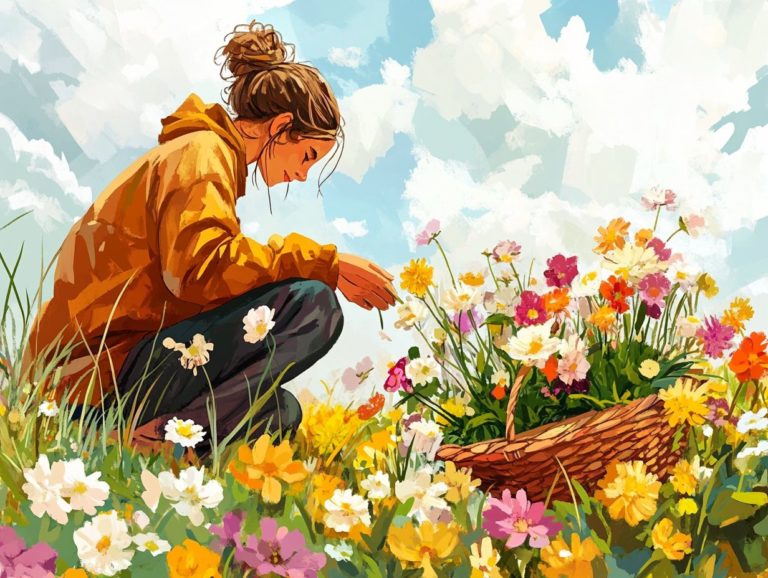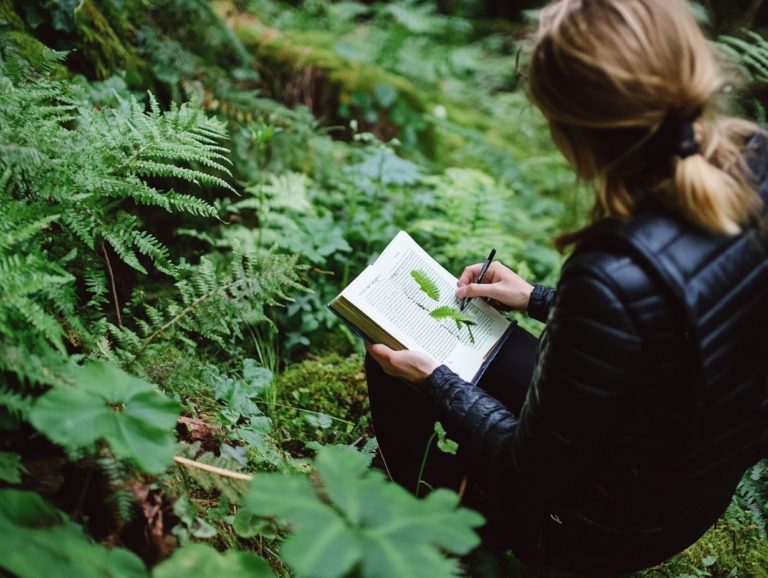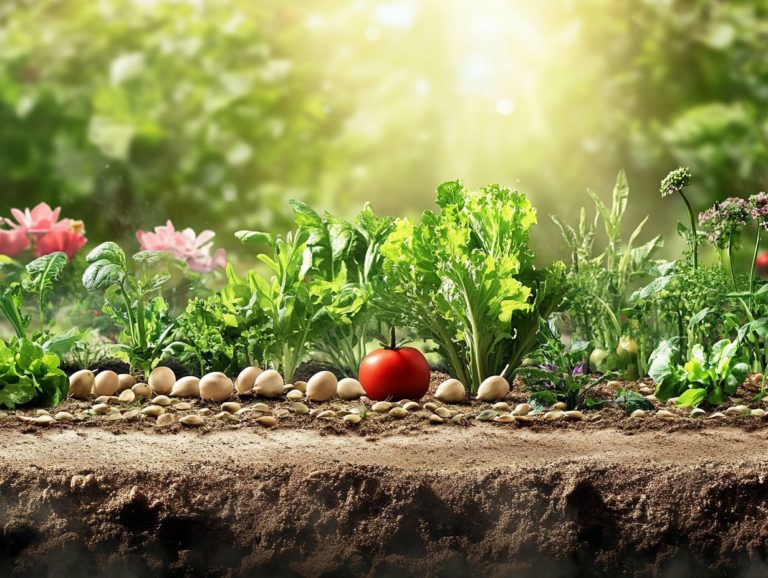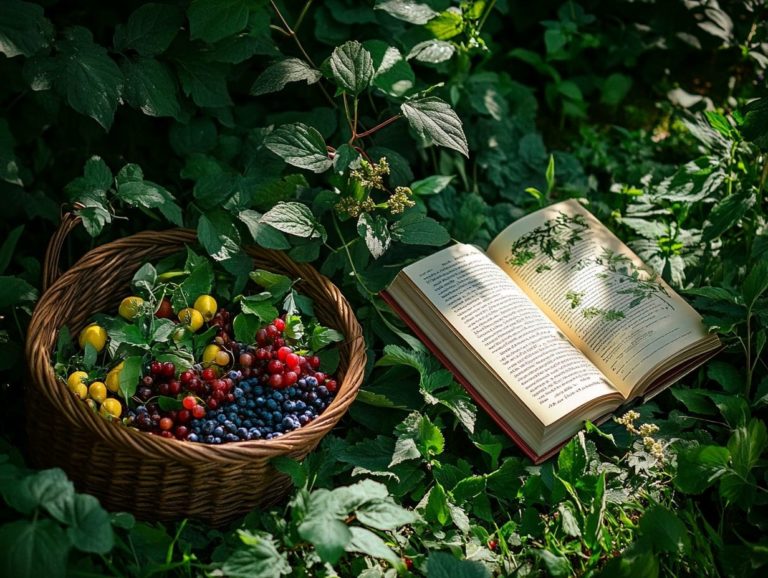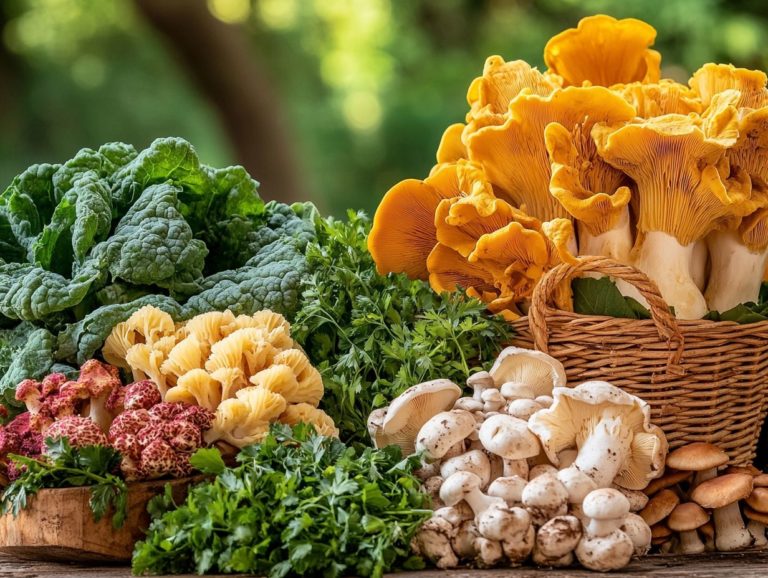5 Edible Plants to Find in Woodlands
Foraging for edible plants presents an enchanting opportunity to connect with nature while unlocking a realm of culinary possibilities.
Picture yourself amidst the vibrant dandelions and sweet wild strawberries. Common plants in woodlands teem with nutritious treasures just waiting to be unearthed.
You ll explore five captivating edible plants, receive guidance on safely identifying them, and delve into the myriad benefits of foraging, including increased energy.
You will find delicious recipes and lifestyle ideas designed to help you wholeheartedly embrace this enriching practice. Safety guidelines are essential as you embark on this journey into the wild and discover the joys that await!
Contents
- Key Takeaways:
- 1. Dandelion
- 2. Wild Strawberries
- 3. Nettles
- 4. Wild Garlic
- 5. Elderberries
- What Are the Benefits of Foraging for Edible Plants?
- What Safety Precautions Should Be Taken When Foraging for Edible Plants?
- Ready to uncover nature’s hidden treasures? How Can One Identify Edible Plants in the Wild?
- What Are Some Common Mistakes to Avoid When Foraging for Edible Plants?
- What Are Some Delicious Recipes Using These Edible Plants?
- How Can One Incorporate Foraging into Their Lifestyle?
- Frequently Asked Questions
- What are some common edible plants to find in woodlands?
- How can I identify edible plants in the woodland?
- Are all wild berries found in woodlands safe to eat?
- Can I eat any type of mushroom found in woodlands?
- Can I find edible plants in woodlands throughout the year?
- What precautions should I take when foraging for edible plants in woodlands?
Key Takeaways:
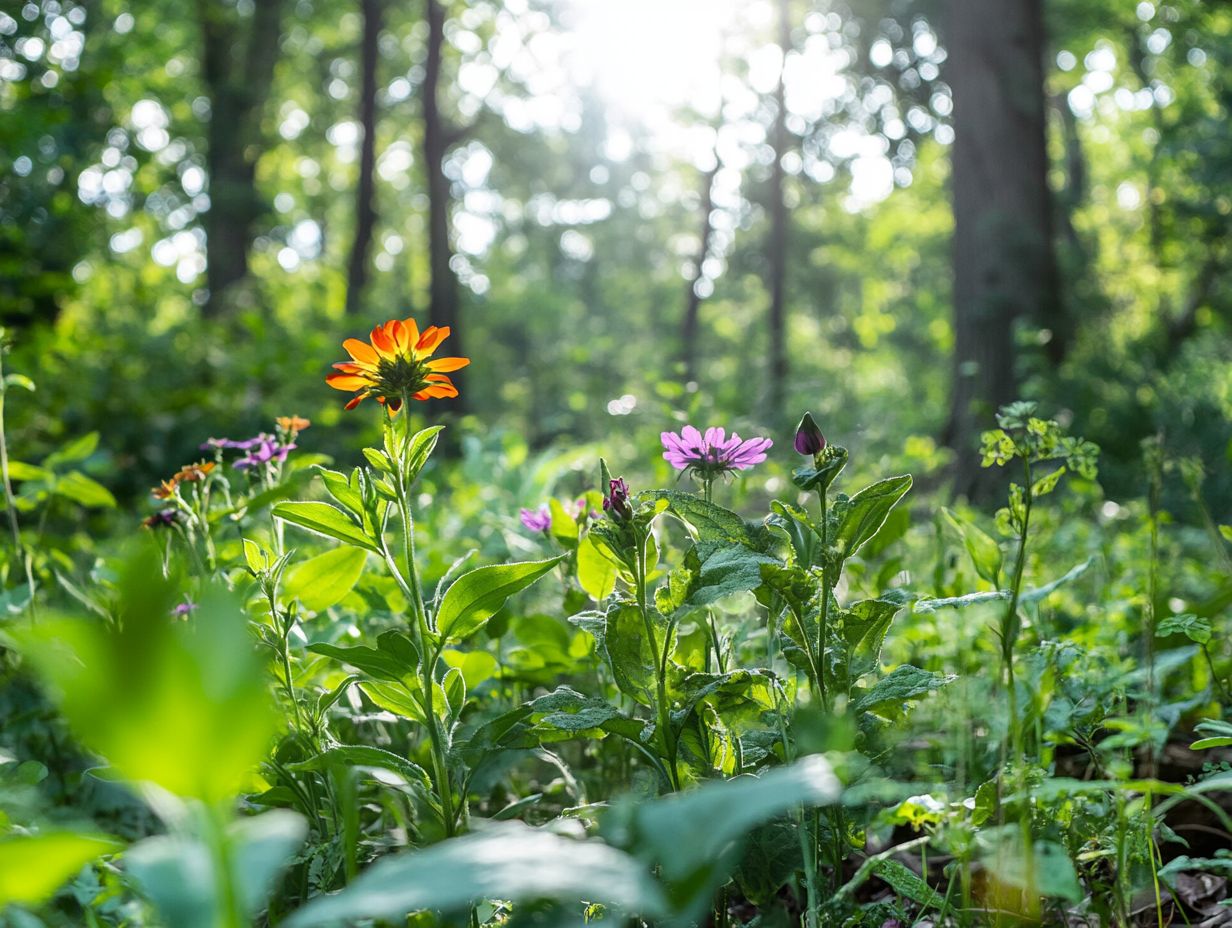
- Dandelions are a common and versatile edible plant found in the Eastern Woodlands, with roots, leaves, and flowers all having culinary uses.
- Wild strawberries are a sweet and nutritious treat found in woodlands, and can be eaten raw or used in desserts and jams, providing significant caloric values.
- Nettles are a highly nutritious and versatile plant found in woodlands, with leaves that can be used in various dishes and even made into tea, making them a great addition to any survival guide.
1. Dandelion
Dandelion is an often-overlooked yet remarkably versatile edible plant found in the Eastern Woodlands. It deserves your attention for its impressive caloric gain and utility in survival situations, as highlighted in the 5 unique features of edible plants.
This common weed packs a punch with its rich nutrients. It is rich in vitamins A, C, and K, along with essential minerals like calcium and potassium, delivering a surprising nutritional boost with minimal calories.
If you’re eager to explore its cooking options, dandelions can be enjoyed raw in salads, saut ed to perfection, or even brewed into tea, enhancing your meals with various flavors and textures.
In survival situations, the roots can be roasted to create a coffee substitute, making this plant a resourceful ally for those in need of sustenance.
Comprehensive guides, such as Waterford Press’s survival manual, emphasize the significance of dandelions, offering insights into their identification, preparation techniques, and health benefits. With this knowledge, you can confidently incorporate this wild edible into your diet.
2. Wild Strawberries
Wild strawberries are not just a delightful snack; they also deliver a commendable caloric output, making them an essential addition to your foraging repertoire in the Eastern Woodlands.
You ll easily recognize these small, vibrant red gems by their heart-shaped leaves and the unique, fragrant aroma that wafts through the air during their peak season.
When you’re ready to harvest, gently pluck the ripe berries, taking care not to damage the delicate plants. This approach encourages future growth, ensuring that the bounty continues for seasons to come.
In the kitchen, wild strawberries shine in a variety of roles. Whether enjoyed fresh, tossed into salads, or transformed into irresistible jams and desserts, their versatility is truly unmatched.
Beyond their culinary appeal, they play a vital role in the ecosystem, attracting various pollinators that support biodiversity, all while offering a sweeter alternative to other edible plants like blackberries or raspberries.
3. Nettles
Nettles, often feared for their sting, are surprisingly nutritious edible plants that can serve as a valuable resource in survival situations when harvested and prepared correctly.
These greens are packed with vitamins A, C, K, and a host of B vitamins, alongside essential minerals like iron, calcium, and magnesium. They truly are a powerhouse of nutrition.
To safely harvest them, remember to wear gloves to protect yourself from their painful sting, and aim to gather young leaves in the spring before they flower. Once cooked or dried, their irritating properties fade, making them safe for consumption.
As a culinary enthusiast, you can elevate your dishes by incorporating nettles into delightful recipes such as:
- Nettle soup
- Pesto
- Saut ed greens
Just be sure to avoid eating raw nettles or gathering them from contaminated areas, as improper handling can lead to unwanted health risks.
Get outdoors and start foraging today for these delicious treasures!
4. Wild Garlic
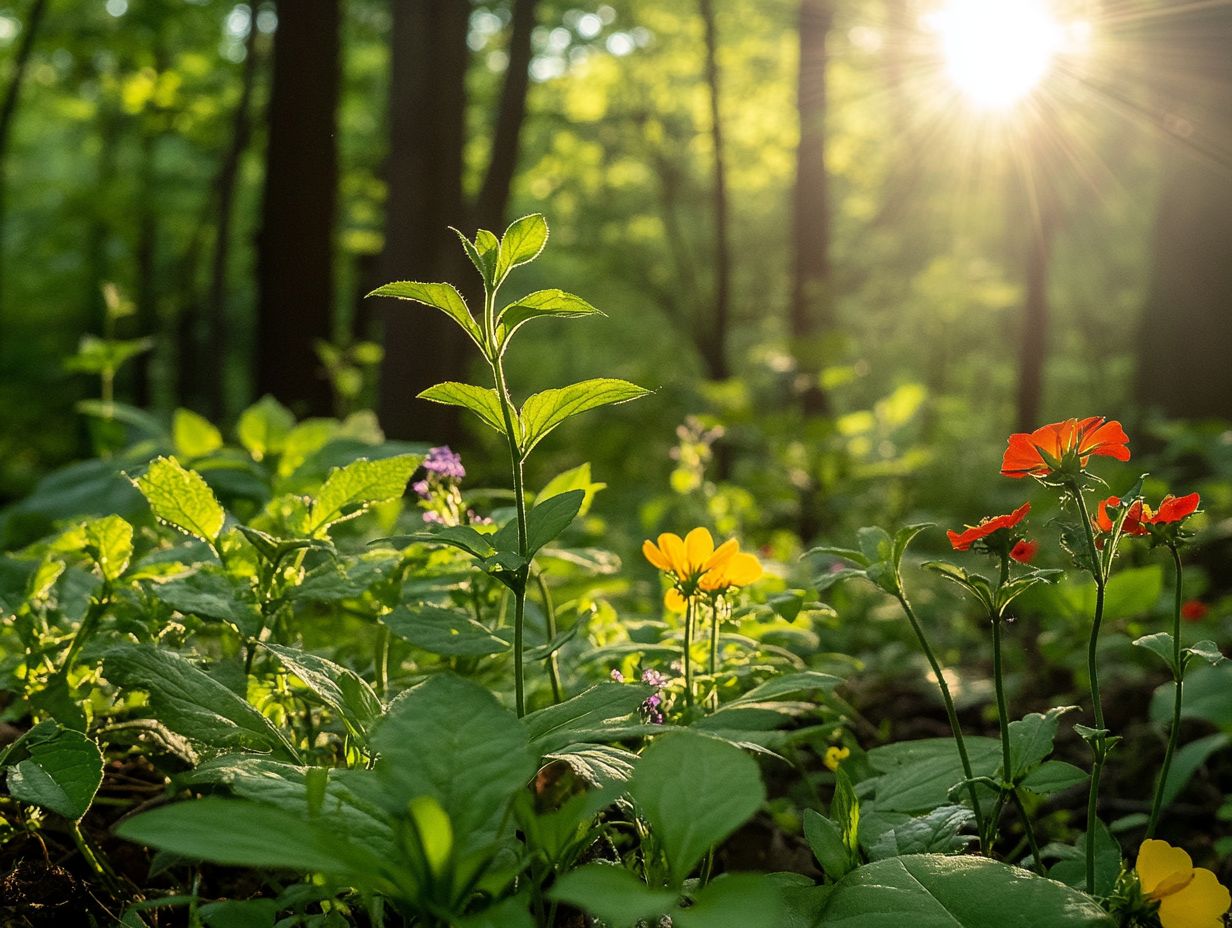
Wild garlic is a fragrant and flavorful edible plant that elevates your meals and offers a caloric boost. It s a valuable find for anyone foraging in the Eastern Woodlands.
Identifying wild garlic is relatively straightforward. Its broad, green leaves grow in clusters and release a distinct garlicky aroma when crushed. To harvest this delightful herb, simply pull up the entire bulb, taking care not to disturb the surrounding plants.
Culinary enthusiasts can incorporate wild garlic into various dishes, from pesto to soups. It adds a unique, herbaceous touch that enhances your culinary creations.
However, foraging demands a cautious approach. Similar-looking plants, such as lily of the valley, are toxic and can be harmful if ingested. Always familiarize yourself with the characteristics of wild garlic and consult reputable guides or experts to ensure your foraging adventures are safe and rewarding.
5. Elderberries
Elderberries, though brimming with nutrients and impressive caloric content, require careful preparation to avoid toxicity. They are a fascinating inclusion in any foraging survival guide.
These petite, dark berries offer a treasure trove of health benefits, providing immune support and boasting anti-inflammatory properties. When foraging for elderberries, it’s essential to harvest them at the optimal time, typically from late summer to early fall. Ensure you’re collecting them from a pristine environment, free from pollutants.
Before indulging in elderberries, remember they must be cooked thoroughly; the raw components can be quite bitter and pose risks. By following safe harvesting practices and proper preparation techniques, you can enjoy the remarkable therapeutic benefits of this extraordinary fruit while minimizing potential health hazards linked to improper consumption.
What Are the Benefits of Foraging for Edible Plants?
Foraging for edible plants boosts your survival skills and connects you deeply with nature. You ll enjoy increased caloric intake and access nutritious foods that may not be readily available in stores.
Foraging also promotes sustainability by encouraging you to source food locally and reduce your carbon footprint. This practice can lead to significant economic savings, as gathering wild edibles allows you to supplement your grocery budget, creating a more varied menu without breaking the bank.
It’s essential to approach foraging with safety as your top priority. Understanding local flora and adhering to guidelines will help you steer clear of dangerous plants. By educating yourself about common species, you enrich your foraging experience while ensuring that this sustainable practice is carried out safely and responsibly.
What Safety Precautions Should Be Taken When Foraging for Edible Plants?
When foraging for edible plants, adhering to comprehensive safety guidelines is crucial to avoid the dangers posed by toxic species, which can lead to serious health risks or even fatal outcomes.
Thoroughly identifying each plant before consumption is essential since many edible varieties have toxic look-alikes. Familiarizing yourself with the 5 key features of edible plants is equally important to steer clear of well-known poisonous species that could pose a significant threat.
Understanding local regulations surrounding foraging practices helps you remain compliant. Investing time in educating yourself about local flora through resources like survival guides can significantly enhance your knowledge and confidence.
This foundational learning enables you to make informed choices, enriching your foraging experience while keeping health and safety at the forefront.
Remember, safety is always your top priority when foraging make smart choices!
Are you ready to explore the world of foraging? Start your journey safely and responsibly!
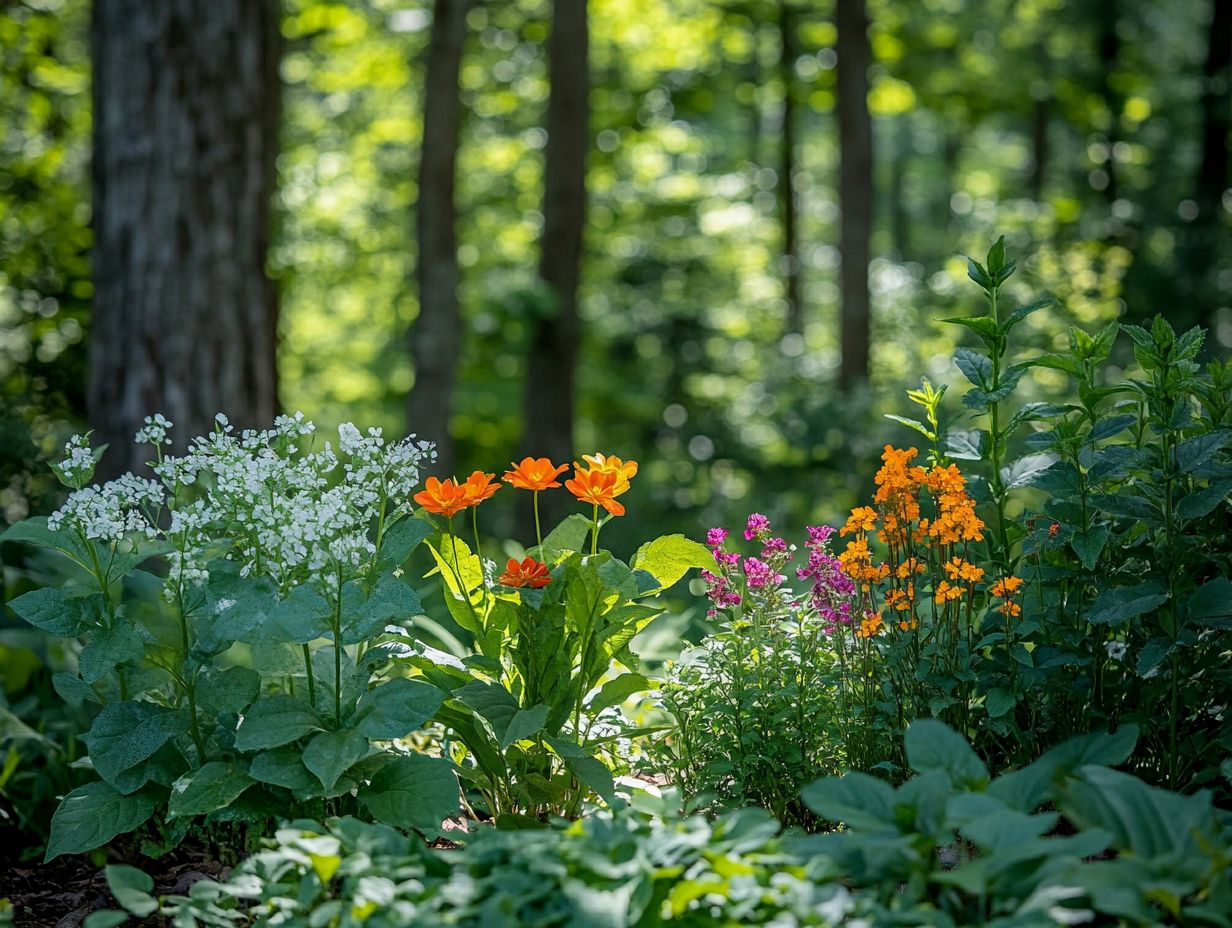
Identifying edible plants in the wild can be an exciting adventure that demands a sharp eye and a good knowledge of common plants. Exploring 5 wild plants to forage this winter can enhance your foraging skills. Trustworthy resources, such as survival guides, are essential to ensure your foraging adventures are both safe and successful.
As you explore nature, it s crucial to pay attention to visual cues like leaf shape, color, and flower characteristics, which can provide essential hints about a plant’s identity. Observing growth patterns considering factors like soil type and surrounding vegetation can help you distinguish between similar species. Don’t underestimate seasonality, or how plants change with the seasons; knowing this is vital for recognizing what s safe and ripe for consumption.
Consulting guides authored by experts like Dave Canterbury and J.M. Kavanagh can greatly enhance your understanding of these techniques, enriching your foraging knowledge and boosting your confidence in the wild.
What Are Some Common Mistakes to Avoid When Foraging for Edible Plants?
Foraging can be a rewarding adventure, but it s crucial for you to avoid common mistakes to ensure safety and truly reap the benefits of discovering edible plants in the wild.
Many people make mistakes when identifying plants, which can lead to serious health risks. Failing to follow safety guidelines, like wearing the right gear and understanding local regulations, can escalate these dangers. Using improper harvesting methods can damage fragile ecosystems, especially when uprooting entire plants instead of selectively taking what you need.
To elevate your foraging skills, it s essential for you to dedicate time to learning about plant identification through field guides or local workshops. Joining community foraging groups can offer invaluable hands-on experience. Keeping a detailed foraging journal will help you track your successful finds while steering clear of past mistakes.
What Are Some Delicious Recipes Using These Edible Plants?
Exploring delicious recipes that feature edible plants like dandelion and wild garlic can truly elevate your meals while maximizing both caloric output and nutritional value. For those interested in expanding their culinary adventures, consider incorporating the top edible fungi for sustainable foraging into your dishes.
These vibrant greens are packed with essential vitamins and minerals, offering unique flavors that can transform your everyday dishes into delicious meals. For example, you can blend wild garlic into creamy pestos or use it to enhance the flavor of soups. Dandelion greens, on the other hand, bring a slightly bitter contrast when saut ed with garlic and olive oil.
By incorporating these plants into salads, stews, or even as standalone side dishes, you can add a fresh twist to your dining experiences while embracing sustainability and nutrition.
How Can One Incorporate Foraging into Their Lifestyle?
Incorporating foraging, the act of searching for and gathering wild food, into your lifestyle can cultivate a profound appreciation for nature. It can elevate your diet with fresh, edible plants and sharpen your survival skills, ultimately guiding you toward a more sustainable way of living. Explore the features of various common plants in your area to enhance your foraging experience.
To effortlessly weave foraging into your daily routine, consider designating specific days for exploring local parks or woodlands where edible flora flourishes, particularly in the Eastern Woodlands. Investing time in studying regional guides or online resources about local wild plants can be invaluable, especially when learning about 5 essential plants to forage in spring, enabling you to pinpoint safe and nutritious options. Make sure to review the terms of use for any online resources you access for foraging.
Engaging in foraging not only enriches your personal experience but can also foster a vibrant community among fellow foragers. Shared stories and discoveries enhance everyone’s understanding and enjoyment of this fulfilling practice. Hosting or participating in foraging meetups can deepen that sense of community and collective learning, making the experience even more rewarding. Be sure to respect the contracts and guidelines set by local organizations.
Frequently Asked Questions
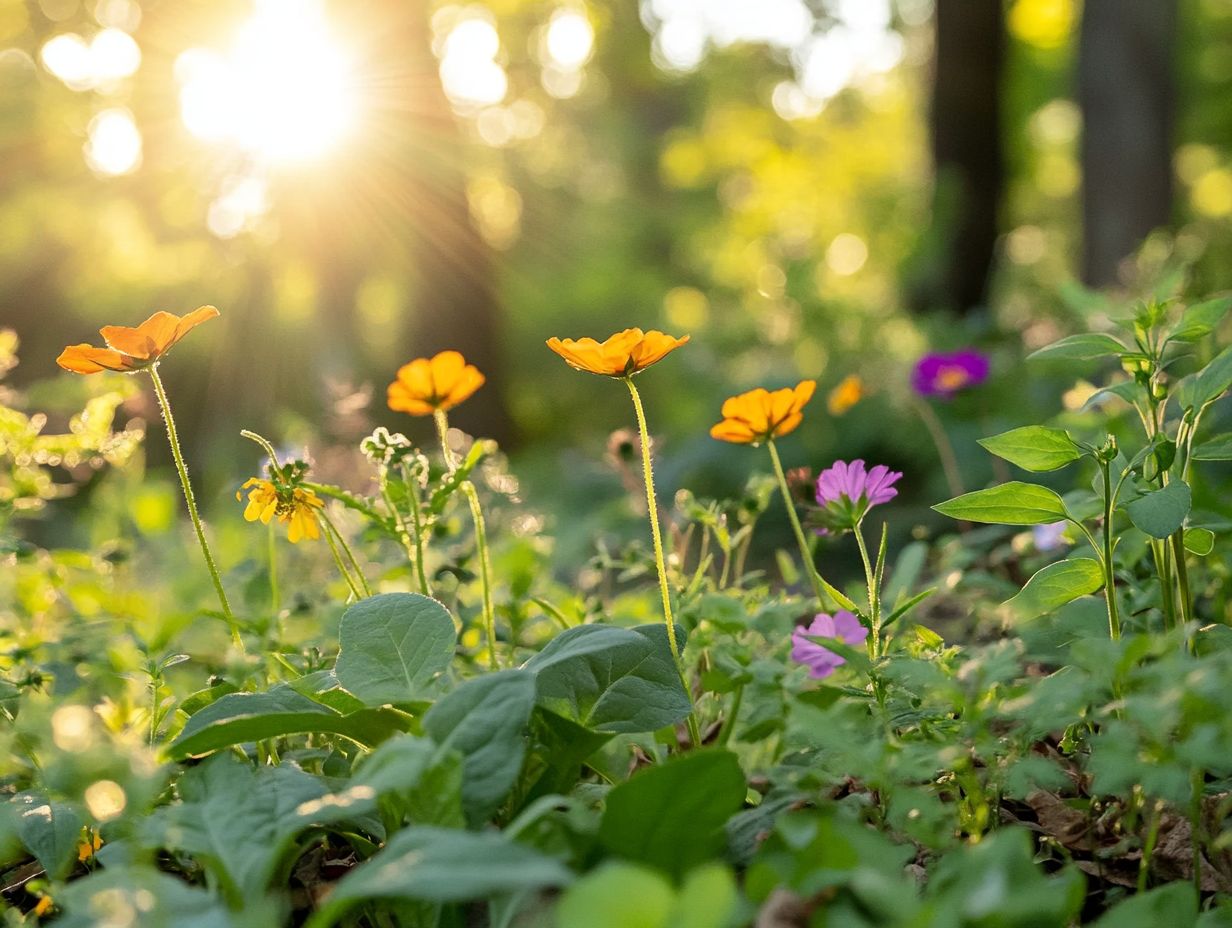
Got questions about foraging? Here are some frequently asked questions!
What are some common edible plants to find in woodlands?
Some common edible plants found in woodlands include wild berries, nuts, mushrooms, wild herbs, and unique wild edibles that you can discover.
How can I identify edible plants in the woodland?
Correctly identifying plants is crucial before consumption. You can use field guides, online resources, or consult with a local expert to help you.
Are all wild berries found in woodlands safe to eat?
No, not all wild berries are safe to eat. Properly identify wild berries before consuming them, as some may be poisonous.
Can I eat any type of mushroom found in woodlands?
No, it is important to correctly identify mushrooms before consumption. Some wild mushrooms can be deadly if consumed.
Can I find edible plants in woodlands throughout the year?
Explore the woods year-round for a treasure trove of flavors! There are different edible plants that can be found, but some may only be available during certain seasons. To enhance your foraging adventures, check out the top 5 wild edibles for beginners and learn what’s in season.
What precautions should I take when foraging for edible plants in woodlands?
Stay updated on foraging practices to ensure safe gathering. Always make sure to correctly identify plants and avoid eating anything you’re unsure of.
Be aware of harmful substances in the environment, such as pesticides or pollution. It’s also important to only take what you need and leave some for wildlife and future foragers.
Get out there and start foraging, but always stay safe and smart!

